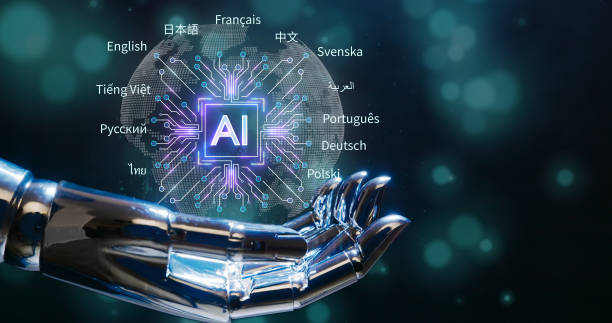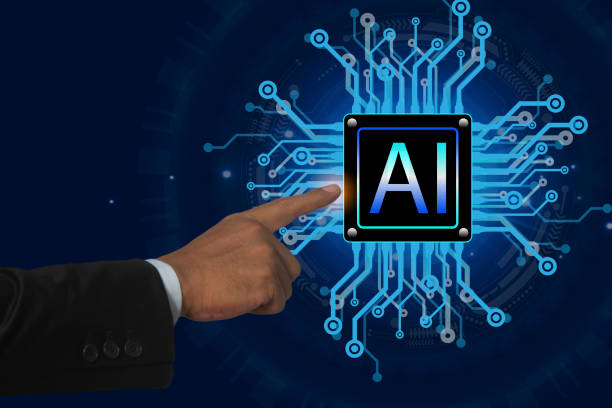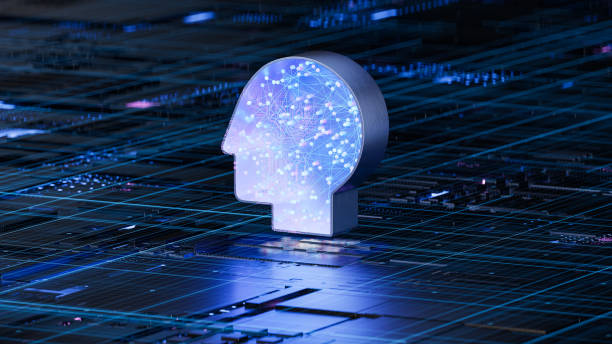What is an AI Robot: Definition and Key Concepts
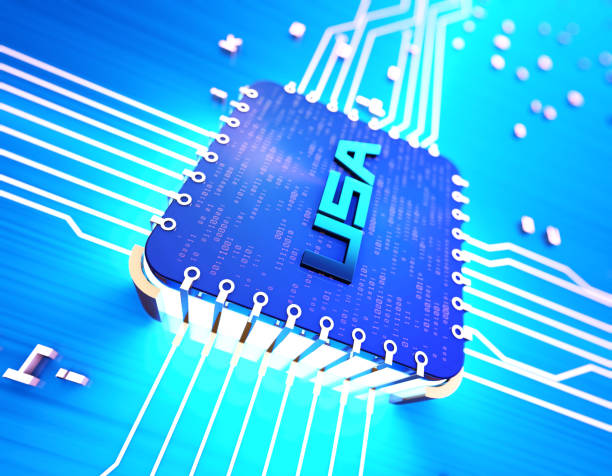
What is an AI Robot: Definition and Key Concepts
#AI Robot is a combination of two distinct fields: robotics and artificial intelligence.
Simply put, an AI robot is a physical machine (robot) that, using #Artificial_Intelligence (AI) algorithms, is capable of performing tasks that typically require human intelligence.
These tasks can include learning, problem-solving, decision-making, natural language understanding, and interacting with the environment.
AI robots fundamentally differ from traditional robots that merely execute pre-programmed instructions.
Artificial intelligence enables the robot to adapt to new data and experiences and improve its performance.
Key concepts in AI robotics include #Machine_Learning, which allows the robot to learn from data, Natural Language Processing, which enables the robot to understand and produce human language, #Computer_Vision, which allows the robot to process and interpret images and videos, and #Planning, which enables the robot to plan to achieve its goals.
AI robots have numerous applications in various industries, including manufacturing, healthcare, customer service, and agriculture.
For example, an AI robot in a factory can be used for quality inspection of products, packaging, and transportation of goods.
In hospitals, AI robots can assist surgeons in complex operations, care for patients, and distribute necessary medications.
AI robots in customer service centers can answer customer questions, resolve their issues, and provide them with the information they need.
And finally, AI robots in farms can be used for planting seeds, harvesting crops, and spraying pesticides.
Is your current e-commerce website design causing you to lose customers and sales?
RasaWeb is your solution with modern and user-friendly e-commerce website designs!
✅ Significant increase in conversion rates and sales
✅ Creation of strong branding and gaining customer trust
⚡ Get free e-commerce website design consultation from RasaWeb!
Main Components of an AI Robot: Hardware and Software
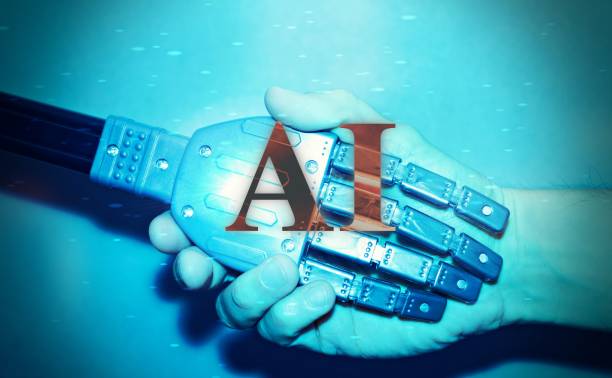
Main Components of an AI Robot: Hardware and Software
An AI robot consists of two main parts: hardware and software.
Hardware includes the physical components of the robot such as sensors, actuators, processors, and power supply.
Sensors collect information from the environment, such as temperature, light, sound, and pressure.
Actuators control the robot’s movement and actions, such as motors, arms, and wheels.
Processors process the information collected by sensors and send necessary commands to the actuators.
The power supply provides the energy required for the robot’s operation.
The software of an AI robot includes artificial intelligence algorithms, an operating system, and applications.
AI algorithms enable the robot to perform various tasks, such as learning, problem-solving, decision-making, and interacting with the environment.
The operating system manages the robot’s core functions, such as memory management, processor management, and input/output management.
Applications perform specific tasks, such as product quality inspection, goods packaging, and answering customer questions.
An AI robot is a complex system that requires coordination and interaction between its hardware and software components.
The selection of appropriate hardware and software for an AI robot depends on the intended application.
For example, an AI robot designed to work in an industrial environment requires robust and durable hardware.
In contrast, an AI robot designed to interact with humans requires advanced software for natural language understanding and facial recognition.
Developing AI robots is a challenging process that requires expertise in both robotics and artificial intelligence.
Applications of AI Robots in Various Industries
![]()
Applications of AI Robots in Various Industries
AI robots have widespread applications in various industries, leading to improved productivity, reduced costs, and increased quality of products and services.
In the #manufacturing industry, AI robots can be used for repetitive and hazardous tasks such as welding, painting, and packaging.
This leads to increased production speed, reduced human error, and improved worker safety.
In the #healthcare industry, AI robots can assist surgeons in complex operations, care for patients, and distribute necessary medications.
AI robots can accelerate disease diagnosis and provide more effective treatments.
In the #customer_service industry, AI robots can answer customer questions, resolve their issues, and provide them with the information they need.
This reduces customer waiting times and improves their satisfaction.
In the #agriculture industry, AI robots can be used for planting seeds, harvesting crops, and spraying pesticides.
This leads to increased agricultural productivity and reduced water and fertilizer consumption.
AI robots also have numerous applications in the #transportation industry, including self-driving cars, delivery drones, and warehouse robots.
With technological advancements, the applications of AI robots are expected to expand across various industries and play a more significant role in our lives.
AI robots can help solve complex problems, improve the quality of life, and create new opportunities.
However, alongside the benefits, there are also challenges that need to be addressed, such as concerns about job displacement and ethical issues related to the use of artificial intelligence.
| Industry | Application |
|---|---|
| Manufacturing | Welding, painting, packaging |
| Healthcare | Surgery, patient care, drug distribution |
| Customer Service | Answering questions, problem-solving |
| Agriculture | Seed planting, crop harvesting, spraying |
Benefits of Using AI Robots: Increased Productivity and Reduced Costs

Benefits of Using AI Robots: Increased Productivity and Reduced Costs
The use of AI robots offers numerous benefits, including increased productivity, reduced costs, improved quality of products and services, enhanced safety, and the creation of new opportunities.
AI robots can perform repetitive and tedious tasks with greater speed and accuracy than humans, leading to increased productivity.
AI robots can work 24 hours a day, 7 days a week, without the need for rest or leave, which also contributes to increased productivity.
Productivity
AI robots can reduce human errors, leading to an improvement in the quality of products and services.
AI robots can work in hazardous and harmful environments, which increases worker safety.
AI robots can perform tasks that are difficult or impossible for humans, which creates new opportunities.
The use of AI robots can reduce labor, energy, and raw material costs.
AI robots can help optimize processes and reduce waste.
Overall, the use of AI robots can help companies and organizations become more competitive, increase their profitability, and provide better services to their customers.
However, it should be noted that the use of AI robots requires initial investment and must be properly planned and executed to achieve desired results.
AI robots require continuous training and maintenance.
How much does losing business leads due to an unprofessional website cost you? Solve this problem forever with professional corporate website design by RasaWeb!
✅ Increase credibility and trust of potential customers
✅ Easier attraction of new business leads
⚡ Get free consultation now!
Challenges in Developing and Implementing AI Robots
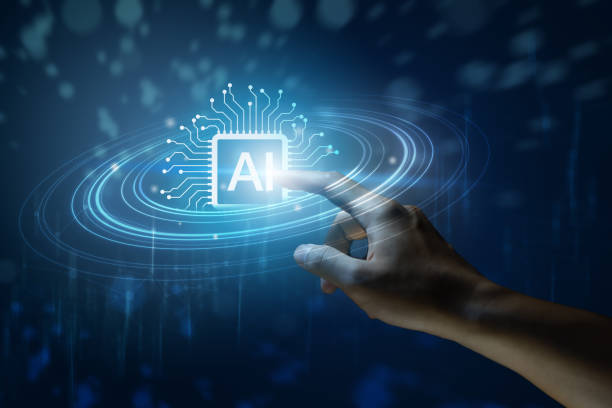
Challenges in Developing and Implementing AI Robots
The development and implementation of AI robots face numerous challenges, including technical complexity, high costs, ethical issues, and concerns about job displacement.
AI robots are complex systems that require expertise in various fields such as robotics, artificial intelligence, software engineering, and hardware engineering.
Developing and implementing AI robots can be costly, especially if it requires the use of advanced technologies and experienced specialists.
AI robots raise various ethical issues, such as accountability for robot decisions, privacy protection, and data security.
One of the main concerns regarding AI robots is job displacement for humans.
With technological advancements, AI robots are becoming capable of performing more tasks that were previously done by humans, which can lead to a reduction in job opportunities.
To overcome these challenges, we need investment in research and development, workforce training, the formulation of appropriate laws and regulations, and the creation of a public dialogue on ethical issues related to artificial intelligence.
AI robots should be designed and used in a way that benefits society and helps improve the quality of life.
For example, AI robots can be used for dangerous and difficult tasks, such as search and rescue in natural disasters, cleaning up toxic materials, and space exploration.
Additionally, AI robots can be used to provide services to those in need, such as caring for the elderly and disabled, educating children, and providing remote medical services.
AI robots have the potential to improve our lives, but they must be properly managed and controlled.
The Future of AI Robots: What to Expect
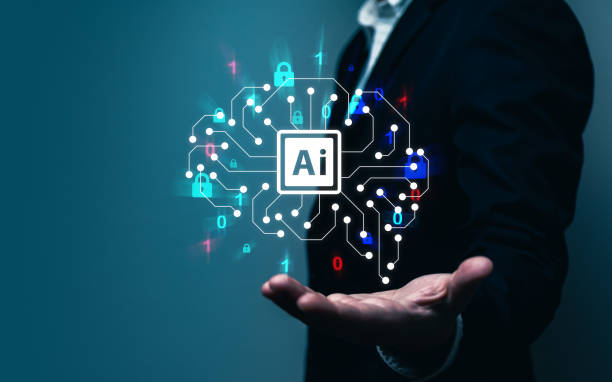
The Future of AI Robots: What to Expect
The future of AI robots appears bright and promising.
With technological advancements, AI robots are expected to become smarter, more capable, and more cost-effective.
AI robots can bring about significant transformations in various fields such as manufacturing, healthcare, customer service, agriculture, transportation, and education.
AI robots are expected to play a more important role in our daily lives, from helping us with daily tasks to providing specialized and personalized services.
AI robots can function as personal assistants, private tutors, companion doctors, and self-driving vehicles.
However, it should be noted that the development and implementation of AI robots require careful planning, appropriate investment, and attention to ethical issues.
AI robots should be designed and used in a way that benefits society and helps improve the quality of life.
Training the workforce to work with AI robots and creating new job opportunities are essential.
Additionally, appropriate laws and regulations must be enacted to govern the use of AI robots to prevent misuse of this technology.
In general, the future of AI robots depends on how this technology is managed and controlled.
If we can use AI robots properly, we can witness positive transformations in various fields.
However, if we fail to manage this technology correctly, we may face serious challenges.
AI robots require significant attention and care.
Types of AI Robots: Classification by Application and Capability

Types of AI Robots: Classification by Application and Capability
AI robots can be categorized into different types based on their application and capabilities.
A common classification is based on the type of task the robot performs.
For example, industrial robots are used for manufacturing tasks in factories, service robots are used to provide services to humans in various environments, and military robots are used for military tasks on the battlefield.
AI robots can be used for search.
Another classification is based on the robot’s level of intelligence.
Simple robots are only capable of performing pre-programmed tasks, while more advanced robots are capable of learning, problem-solving, and decision-making.
Advanced AI robots can interact with their environment and improve their performance based on their experiences.
AI robots are currently widely available.
Some common types of AI robots include industrial robotic arms, wheeled robots, flying robots (drones), humanoid robots (androids), and soft robots.
Each of these robot types is designed for specific applications and has unique features and capabilities.
Choosing the appropriate type of AI robot depends on the specific needs and requirements of each application.
AI robots have brought about a massive transformation in the industry.
| Robot Type | Applications |
|---|---|
| Industrial Arm | Assembly, welding, packaging |
| Wheeled Robot | Transportation, warehousing, cleaning |
| Drone | Imaging, goods delivery, surveillance |
| Humanoid Robot | Customer service, elderly care |
| Soft Robot | Medicine, exploration in unknown environments |
Skills Required for Working with AI Robots
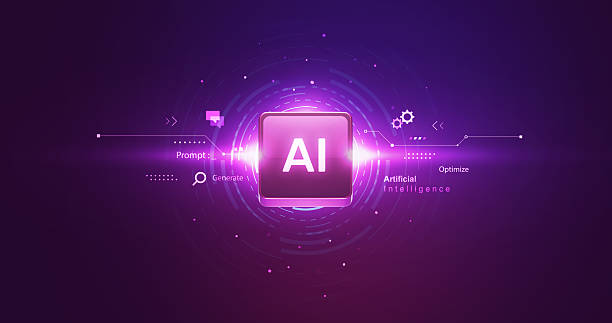
Skills Required for Working with AI Robots
Working with AI robots requires a combination of technical and non-technical skills.
Among the required technical skills are programming knowledge, familiarity with artificial intelligence algorithms, understanding of robotics concepts, and the ability to work with robot simulation and control software.
Also, familiarity with sensors and actuators used in robots and the ability to troubleshoot and repair them is important.
AI robots require special skills.
In addition to technical skills, non-technical skills are also essential for working with AI robots.
These skills include problem-solving ability, critical thinking, creativity, communication skills, and teamwork.
Working with AI robots often requires collaboration with specialists from other fields, so effective communication and teamwork skills are very important.
AI robots have brought a revolution in the job industry.
Given the rapid advancement of technology, continuous learning and updating knowledge and skills are also essential for working with AI robots.
Participating in training courses and specialized workshops, studying scientific and technical articles, and following the latest achievements in this field can help individuals improve their skills and remain competitive in this domain.
AI robots require specialized personnel.
Is your current e-commerce website design causing you to lose customers and sales?
RasaWeb is your solution with modern and user-friendly e-commerce website designs!
✅ Significant increase in conversion rates and sales
✅ Creation of strong branding and gaining customer trust
⚡ Get free e-commerce website design consultation from RasaWeb!
Ethics in AI Robots: Important Considerations and Challenges
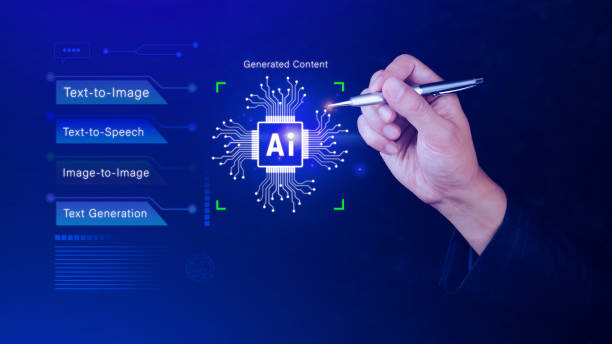
Ethics in AI Robots: Important Considerations and Challenges
The development and use of AI robots raise important ethical issues that must be carefully considered.
One of the most important issues is accountability.
If an AI robot makes a decision that leads to harm or damage, who will be responsible? Should the robot’s manufacturer, its programmer, or its user be held accountable? These questions still lack definitive answers and require further discussion and consideration.
AI robots must be ethical.
Another issue is privacy.
AI robots often collect a lot of information about their surroundings and the people they interact with.
How can this information be protected and prevented from misuse? Appropriate laws and regulations are needed to govern the collection, storage, and use of this information.
AI robots should not violate individuals’ privacy.
The third issue is fairness and discrimination.
AI algorithms may inadvertently be discriminatory and make decisions that disadvantage specific groups of people.
For example, an AI robot used for employee recruitment may unintentionally prefer men over women.
To prevent this, AI algorithms must be carefully reviewed to ensure they are free from any discrimination.
AI robots must be fair.
Important Tips for Choosing and Buying an AI Robot

Important Tips for Choosing and Buying an AI Robot
Choosing and purchasing an AI robot requires attention to various points.
First and foremost, you must accurately define your needs.
What tasks do you want the AI robot to perform? In what environment will it operate? What is your budget for buying the robot? Answering these questions will help you narrow down your options and select the appropriate robot.
An AI robot is not suitable for every application.
After determining your needs, you should pay attention to the robot’s technical specifications.
Processing power, memory, sensors, actuators, power supply, and robot dimensions are among the important technical specifications that should be reviewed.
Also, you should pay attention to the robot’s software and operating system.
Does it support your required software? Is its operating system up-to-date and secure? AI robots require specific software.
Finally, before purchasing the robot, be sure to test it.
Ask the seller to demonstrate the robot in your intended environment and check its performance.
Also, ensure the robot’s after-sales service and warranty.
A good robot should have good after-sales service.
By observing these tips, you can choose the right AI robot and benefit from its advantages.
An AI robot is a long-term investment.
Frequently Asked Questions
| Question | Answer |
|---|---|
| What is an AI robot? | An AI Robot is a machine capable of understanding the environment, reasoning, learning, and making decisions to perform tasks autonomously. |
| What is the difference between conventional robots and AI robots? | Conventional robots perform repetitive tasks based on pre-programming, while AI robots can learn from experience, interact dynamically with the environment, and even behave in a way that resembles human intelligence. |
| What are the main applications of AI robots? | They have applications in industries (manufacturing, assembly), medicine (surgery, diagnosis), services (customer support, domestic), exploration (space, underwater), and many other fields. |
| What technologies are used in the construction of AI robots? | Machine Learning, Computer Vision, Natural Language Processing, Deep Learning, and Robotics are among the key technologies. |
| Can AI robots have emotions? | Currently, robots do not have emotions in the human sense. They can identify and react to emotions, but they do not experience emotions themselves. |
| What are the main challenges in developing AI robots? | Safety, reliability, ethics, autonomy, adaptability to complex environments, and natural human interaction are among the significant challenges. |
| How are AI robots trained? | They are typically trained using large volumes of data, machine learning algorithms, and deep learning to identify patterns and make decisions. |
| Examples of AI robots in daily life? | Smart robotic vacuum cleaners, customer support chatbots, self-driving cars, and surgical robots in hospitals. |
| Are AI robots a threat to human jobs? | Some repetitive jobs may become automated, but at the same time, robots can increase productivity and create new jobs in the development, maintenance, and supervision of these systems. |
| How is the future of AI robots predicted? | They are expected to become smarter, more autonomous, and capable of performing more complex tasks, and will interact more closely with humans in various environments. |
And other services of RasaWeb Advertising Agency in the field of advertising
- Smart Data Analysis: An innovative service to increase customer acquisition through marketing automation.
- Smart Content Strategy: Revolutionize website traffic with the help of marketing automation.
- Smart Link Building: An effective tool for digital branding with precise audience targeting.
- Smart Sales Automation: A combination of creativity and technology to improve SEO ranking through SEO-driven content strategy.
- Smart Brand Identity: A combination of creativity and technology to increase click-through rates by using real data.
And more than hundreds of other services in the field of online advertising, advertising consultation, and organizational solutions
Online Advertising | Advertising Strategy | Advertorial
Resources
AI Articles on Zoomit
Smart Robot Reviews on Digikala Mag
AI News on ISNA
Latest AI News on Tasnim
? Are you ready for your business to shine in the digital world? RasaWeb Afarin Digital Marketing Agency, with a specialized and creative team, offers the best comprehensive solutions including custom website design, SEO optimization, and smart social media management for your sustainable growth and success.
📍 Tehran, Mirdamad Street, next to the Central Bank, South Kazeroun Alley, Ramin Alley, No. 6

